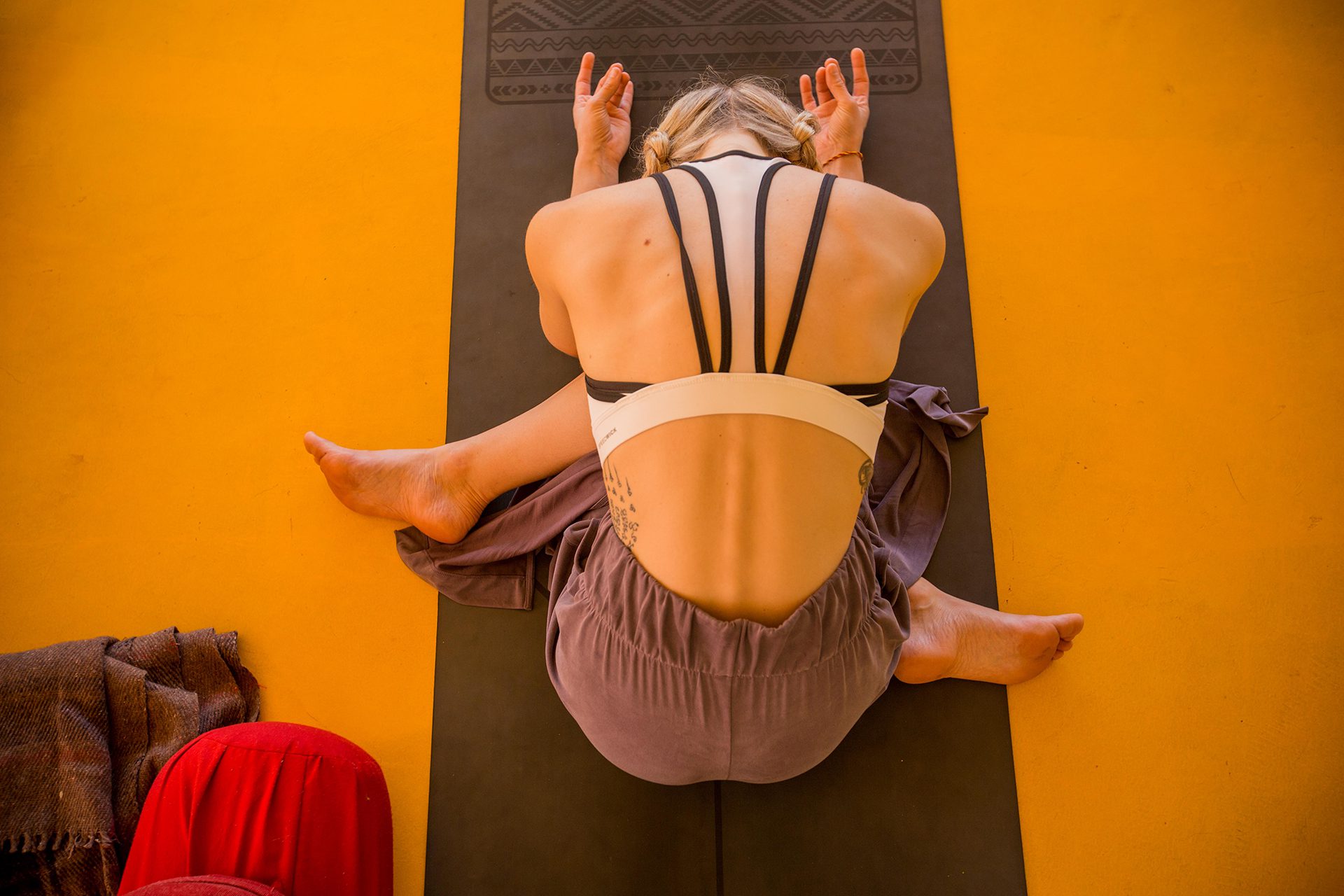How to Teach a Multi-level Yoga Class
You might try your best to segment classes and students based on their level of practice as a beginner, intermediate or advanced practitioner, but sometimes you’ll still have a mixed class that requires you to provide variations of exercises. Flexibility, mobility and strength levels may vary, leaving students turning to yoga teachers for modifications. The good news is many yoga teacher training courses provide options for asanas, prep poses, drills and strengthening exercises that are multi-level and accessible by different groups. These multi-level yoga teacher training modules equip you to be well-prepared for a scenario where you may need to consider the level accessible by different students. In this article, we’ll look at nine ways on how to teach multi-level yoga classes.

- Take time for warm-ups and joint rotations: An absolute must, taking the time for warm-ups and joint rotations helps you understand the strength and flexibility of the students in the beginning itself. You can add Surya Namaskars, starting with a few slow rounds and gradually increasing the speed to test stamina. Include shoulder and hip joint rotation exercises with straps and blocks. Add in postures likeChaturanga, low planks and those that require squating such as Utkatasana, and Goddess Pose, as they not only release tightness, but improve strength and flexibility. You’ll immediately know the level of students – who need easier variations and who can do the more challenging arm balances, splits or inversions.
- Be present and engaged: Demonstrate once or twice if you need to, but spend most of your time walking around the room. Of course, ask for permission before you assist with a hands-on approach, but be engaged and present throughout. Go up to students, nudge them, encourage them and praise them for their efforts and practice. This way you can offer individual modifications as and when you see a student needs it, you can help students try a more challenging version and you’ll continuously encourage them to push themselves more than usual (safely and without injuries).
- Provide clear instructions: Since you are teaching a multi-level class, you have to be extremely clear in your instructions. Indicate whether the variation you are showing is beginner-friendly or suitable for intermediate and advanced practitioners. If you are suggesting the use of props for a particular asana or for beginners to attempt a step-up variation, explain how to use the props and how it can be helpful.
- Alignment cues: Giving alignment cues for all levels is helpful in practicing safely and preventing injuries. There are common cues for all levels for some asanas, and there are cues specific to a level in some asanas. For example, microbending the knee in asanas like Warrior 1 and 2, instead of locking the knee. Or, walking the feet towards the hands and pushing the back and chest up in the Wheel Pose. You will learn about alignment cues in-depth during your asana sessions in your yoga teacher training course. Similar to your instructions, be clear in your cues and use professional language throughout.
- Offering modifications: In a multi-level class, you can start by teaching the middle pose first. Clearly communicate that the pose has options, and they should try the version that works for them. Offer a step-down version for those who need it. Then offer the step-up, advanced version for those who are up for a challenge. Use empowering words such as ‘if you are comfortable here, try the challenging version like this…’, or ‘if you feel like trying, take a step up with this variation’. Beginner-level students will slowly feel encouraged to try the mid-level pose, even if they didn’t in the beginning.
- Standing and balancing poses: Standing poses are quite accessible by everyone, compared to seated poses (which are often harder for those with tight hips) or kneeling ones (difficult for those with knee pain). In a multi-level class you can try including more standing poses like Warrior 1 and 2, Triangle Pose, Extended Side Bend, Chair Pose, etc. This will be common for almost everyone. On the other hand, balancing poses are challenging for many, irrespective of the level. One can get better with balancing poses only with practice, even if it means falling over a couple of times, or using a wall as support. So, don’t hesitate to include balancing postures and encourage everyone to try them.
- Workshop style: You can choose to take breaks from a sequence or flow to introduce a new pose, demonstrate a posture with modifications and props, give students a water break, or ask them to rest in Child’s Pose. You can use this time to explain advanced or challenging poses or flows like Down Dog to Wild Things, or inversions like Headstand to Scorpion Pose. This will motivate other students to work on their drills and preparatory asanas to start attempting the advanced poses!
- A mindful sequence: There are many Vinyasa flows that require practitioners to go from standing position to down on the mat and back up again in a quick succession (such as Chaturanga Dandasana to Urdhva Mukha Svanasana to Adho Mukha Svanasana). While this could be challenging for some, you should still add it but with an option for modifications (like placing the knees on the mat in Chaturanga Dandasana). This being said, avoid excessive up and down movements unless it’s a Vinyasa sequence. If practicing one asana at a time (like you would in Hatha yoga or Ashtanga), finish standing asanas, then move onto seated, prone and finally supine (and the much-awaited Svanasana!). Whichever style you are teaching, be mindful of different levels, strength and flexibility of the students.
- Cool down time: No matter which class, level or style, never skip the cool down time. Calming the nervous system, stretching the body after backbends, forward bends and intense hip-openers, and really relaxing the body will bring balance and rest to the system. You can instruct students to lay down in Savasana or with their legs up on the wall in Viparita Karani. Spend a few minutes doing a soothing pranayama practice such as Nadi Shodhana or Brahmari before winding up the class. There are many different ways you can end the session which you will learn effectively during your yoga teacher training course.
The idea is to be prepared for a multi-level yoga class. Be flexible in your sequence and preparation for the class with enough ideas to provide beginner, intermediate and advanced options. Remember to always praise students for their efforts and motivate them to try new variations to help them progress!
YOGA ALLIANCE REGISTERED YOGA TEACHER TRAINING COURSES

Sampoorna Yoga Teacher Training School has been a registered international yoga school with Yoga Alliance, holding RYS-200, RYS-300, RYS-500, and YACEP designations since 2009. Its online and in-person Yoga Teacher Training Courses and Certifications are recognized and accepted worldwide, enabling all graduates to teach globally. Upon course completion, participants receive a 200-Hour, 300-Hour, or 50-Hour Yoga Teacher Training Certification, allowing registration as RYTs (Registered Yoga Teachers) with Yoga Alliance. Our Yoga Teacher Training Certificate Courses empower you to teach legally in any country, whether you choose to register with Yoga Alliance registration or not.

